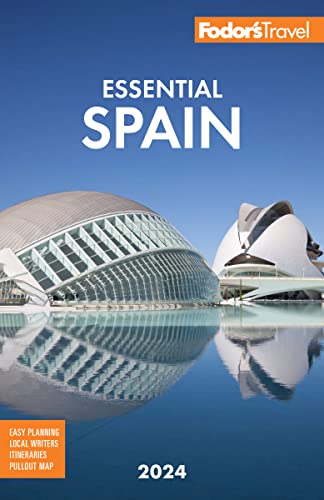Barcelona, the North Coast, and Galicia, 16-day Itinerary
Dive into happening Barcelona, with its unique blend of Gothic and Gaudí architecture, colorful markets, and long city beaches. Then head to the verdant north for culinary sophistication in San Sebastián and to check out the Guggenheim in chic Bilbao. Next, wind your way along the wild, rugged coastline, taking in the mountains, fishing ports, bagpipes, and Europe's best seafood along the way.
Days 1–3: Barcelona
To get a feel for Barcelona, begin with La Rambla and the Boquería market. Then set off for the Gothic Quarter to see the Catedral de la Seu, Plaça del Rei, and the Catalan and Barcelona government palaces in Plaça Sant Jaume. Next, cross Via Laietana to the Born-Ribera (waterfront neighborhood) for the Gothic Santa Maria del Mar and nearby Museu Picasso.
Make Day 2 a Gaudí day: Visit the Temple Expiatori de la Sagrada Família, then Park Güell. In the afternoon see the Casa Milà and Casa Batlló, part of the Manzana de la Discòrdia on Passeig de Gràcia. Palau Güell, off the lower Rambla, is probably too much Gaudí for one day, but don't miss it.
On Day 3, climb Montjuïc for the Museu Nacional d'Art de Catalunya, in the hulking Palau Nacional. Investigate the Fundació Miró, Estadi Olímpic, the Mies van der Rohe Pavilion, and CaixaForum exhibition center. At lunchtime, take the cable car across the port for seafood in Barceloneta and then stroll along the beach.
Logistics: In Barcelona, walking or taking the subway is better than cabbing it.
Day 4: San Sebastián
San Sebastián is one of Spain's most beautiful—and delicious—cities. Belle Époque buildings nearly encircle the tiny bay, and tapas bars flourish in the old quarter. Not far from San Sebastián is historic Pasajes (Pasaia) de San Juan.
Logistics: Take the train from Barcelona to San Sebastián (5 hours 30 minutes) first thing in the morning. You don't need a car in San Sebastián proper, but visits to cider houses in Astigarraga, Chillida Leku on the outskirts of town, and many of the finest restaurants around San Sebastián are possible only with your own transportation or a taxi (the latter with the advantage that you won't get lost). The freeway west to Bilbao is beautiful and fast, but the coastal road is recommended at least as far as Zumaia.
Days 5 and 6: The Basque Coast
The Basque coast between San Sebastián and Bilbao has a succession of fine beaches, rocky cliffs, and picture-perfect fishing ports. The wide beach at Zarautz, the fishermen's village of Getaria, the Zuloaga Museum in Zumaia, and Bermeo's port and fishing museum should all be near the top of your list.
Days 7 and 8: Bilbao
Bilbao's Guggenheim Museum is worth a trip for the building itself, and the Museo de Bellas Artes has an impressive collection of Basque and Spanish paintings. Restaurants and tapas bars are famously good in Bilbao.
Logistics: In Bilbao, use the subway or the Euskotram, which runs up and down the Nervión estuary.
Days 9 and 10: Santander and Cantabria
The elegant beach town of Santander has an excellent summer music festival every August. Nearby, Santillana del Mar is one of Spain's best Renaissance towns, and the museum of the Altamira Caves displays reproductions of the famous underground Neolithic rock paintings discovered here. Exploring the Picos de Europa will take you through some of the peninsula's wildest reaches, and the port towns along the coast provide some of Spain's most pristine beaches.
Days 11–13: Oviedo and Asturias
The coast road through Ribadesella and the cider capital Villaviciosa to Oviedo is scenic and punctuated with tempting beaches. Oviedo, its cathedral, and the simplicity of its pre-Romanesque churches are worlds away from the richness of Córdoba's Mezquita and Granada's Alhambra.
Logistics: The A8 coastal freeway gets you quickly and comfortably to Gijón, then hop on the A66 to Oviedo. From there, head back to the A8 and go west through Avilés and into Galicia via the coastal N634—a slow but scenic route to Santiago.
Days 14–16: Santiago de Compostela and Galicia
Spain's northwest corner, with Santiago de Compostela at its spiritual and geographic center, is a green land of bagpipes and apple orchards. The Albariño wine country, along the Río Miño border with Portugal, and the rías (estuaries), full of delicious seafood, will keep you steeped in enxebre—Gallego for "local specialties and atmosphere."
Logistics: The four-lane freeways AP9 and A6 whisk you from Lugo and Castro to Santiago de Compostela and to the Rías Baixas. By car is the only way to tour Galicia. The AC862 route around the upper northwest corner and the Rías Altas turns into the AP9 coming back into Santiago.




